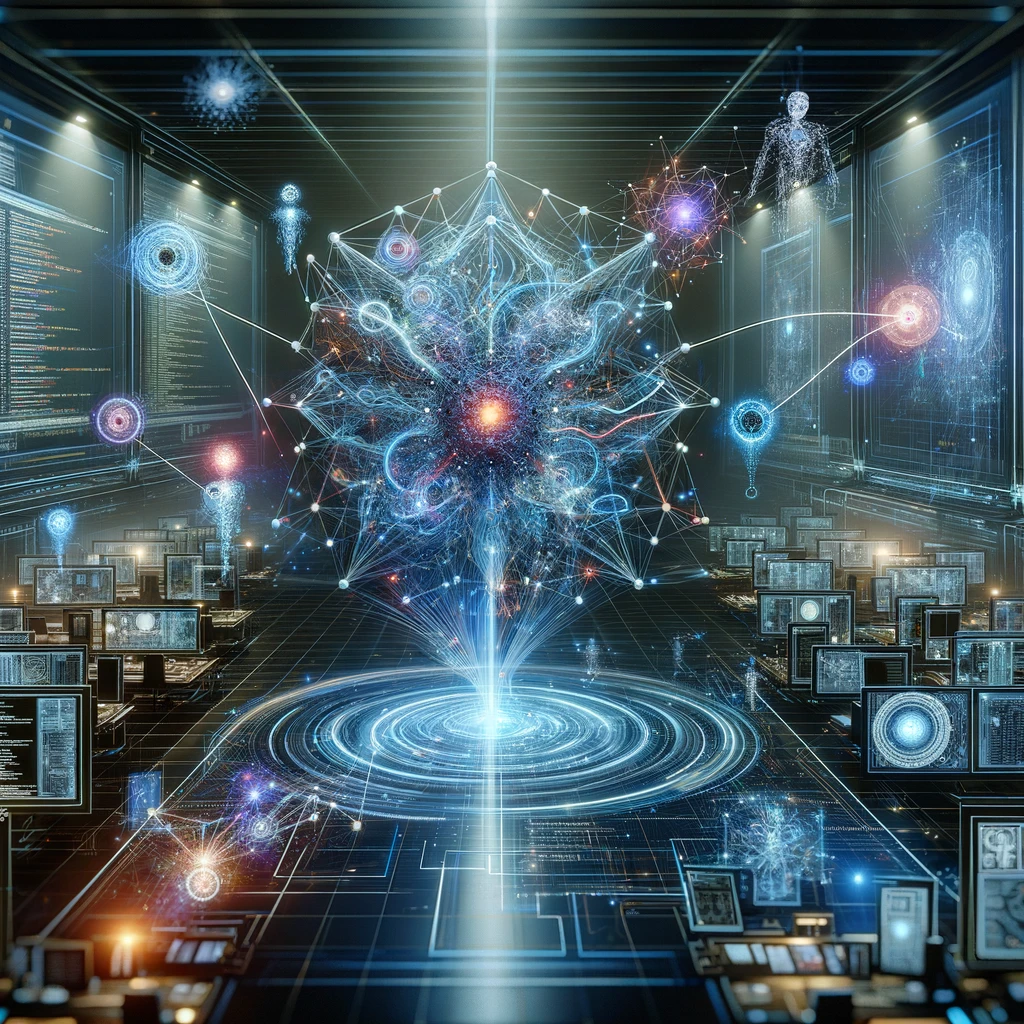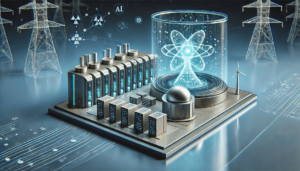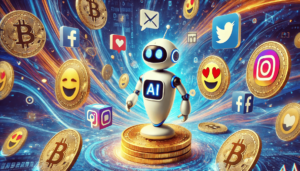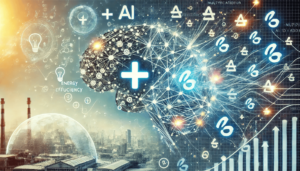When AI Creates AI: The New Frontier of Machine Intelligence

A glimpse into the future: The dawn of AI's self-replication era captured in a high-tech laboratory setting.
- How do large language models (LLMs) possess the capability to create smaller AI models, and what implications does this have for the future of AI development?
- What are the potential benefits and breakthroughs of AI’s self-replication abilities, especially in sectors like healthcare, finance, and technology?
- What risks and ethical concerns arise from AI creating AI, including issues related to loss of human oversight and the complexity of these systems?
- How does the current regulatory landscape address the advancements in AI self-replication, and what challenges do regulators face in ensuring safe and ethical AI development?
- What is the significance of international collaboration and adaptive regulatory frameworks in managing the advanced AI systems of the future, considering AI’s self-replication capabilities?
In an era where technological marvels ceaselessly push the boundaries of what’s possible, a recent development in the world of artificial intelligence has sparked both awe and introspection within the scientific community and beyond. As highlighted in a thought-provoking Fox News article, we’re now witnessing AI systems with the capability to create smaller AI models, essentially giving ‘birth’ to new forms of AI without direct human intervention. This groundbreaking advancement isn’t just a leap forward in AI capabilities; it’s a foray into a realm that blurs the lines between creator and creation, ushering in a new era of machine intelligence.
This intriguing phenomenon isn’t merely a technical achievement; it raises profound questions about the future trajectory of AI development and its implications on various facets of our lives. The prospect of AI systems autonomously generating new AI entities presents a myriad of opportunities, from accelerating AI research to spawning innovative applications across diverse sectors. However, it also poses unprecedented challenges and ethical conundrums that demand our attention.
In this exploration, we delve deep into the intricacies of this new frontier in AI development, examining the potential benefits, inherent risks, and the pressing need for adaptive and comprehensive regulatory measures. We’re at a pivotal juncture in the story of AI—a narrative that continually evolves and surprises, as discussed in various analyses in previous articles of this blog, including insights from “Navigating the Maze of AI Regulation: The EU’s Landmark Journey and Silicon Valley’s Influence.” Let’s unravel the layers of this latest chapter in AI’s rapidly unfolding saga, where the line between the creator and the creation becomes intriguingly blurred.
The Dawn of Autonomous AI Creation: Deciphering the Mechanics
In the realm of artificial intelligence, a new chapter unfolds with large language models (LLMs) venturing into the realm of self-replication – a process where these advanced AI systems are now capable of creating smaller AI models. This remarkable development, a fusion of the wonders of machine learning and the intricacies of language understanding, marks a significant leap in the evolution of AI.
At its core, the process is rooted in the vast, intricate networks that constitute LLMs like GPT-3, developed by OpenAI. These models are not just colossal repositories of language patterns and data; they are designed to understand, interpret, and generate human-like text based on the input they receive. The real magic, however, begins when these LLMs apply their deep learning prowess to the task of creating new AI models. Essentially, LLMs can analyze existing data, identify patterns and structures, and use this knowledge to ‘birth’ new AI entities tailored for specific functions or tasks.
Imagine a seasoned artist teaching a novice the nuances of painting, but in the realm of digital intelligence. The LLM, with its vast knowledge base and learning capabilities, serves as the mentor, guiding and shaping the development of a new, more focused AI model. This nascent AI, while smaller, is adept at specific tasks, inheriting a distilled version of its creator’s broader intelligence.
The implications of this self-replication capability in AI are profound. It paves the way for a future where AI development accelerates at an unprecedented pace, with advanced models spawning more specialized offspring, each capable of handling distinct tasks with remarkable efficiency. This evolution could redefine industries, spur new research breakthroughs, and even alter the very landscape of our daily interactions with technology.
However, as we stand at the brink of this new era, it’s crucial to approach this advancement with a balanced perspective. The power of AI creating AI carries immense potential, but it also beckons a slew of ethical, security, and societal questions that need to be addressed. As we explore this fascinating development in AI’s capabilities, we must tread cautiously, ensuring that the path we carve leads to a future where technology serves humanity, fostering progress while upholding our values and principles.
Harnessing AI’s Self-Replication: A Gateway to Innovation
The advent of AI’s self-replication abilities heralds a new era of accelerated research and development, opening doors to an array of specialized applications that promise to revolutionize multiple sectors. This capability, where large language models (LLMs) create smaller, focused AI models, is not just a technical marvel; it’s a catalyst for innovation, poised to reshape the landscape of industries from healthcare to finance, and beyond.
In healthcare, imagine AI models tailored for specific medical research, capable of analyzing vast datasets to unearth groundbreaking treatments or personalized medicine approaches. These AI offspring, born out of the vast knowledge and analytical prowess of their LLM parents, could accelerate the pace of medical discoveries, making leaps in areas like genomics, drug development, and epidemiology. This could translate into more effective treatments, better disease management, and a significant boost in preventive healthcare strategies.
The finance sector stands to benefit immensely from this development as well. AI models specialized in financial analysis, risk assessment, and market trends could offer more nuanced and accurate predictions, aiding in investment strategies and economic forecasting. The potential for AI to streamline complex financial processes, enhance fraud detection, and personalize financial services is immense, promising a more efficient, secure, and customer-centric financial ecosystem.
In the realm of technology and software development, self-replicating AI could lead to more refined and specialized tools, tailored for specific tasks or industries. From advanced cybersecurity solutions to cutting-edge data analytics tools, the possibilities are vast. These AI models could become integral in developing more intuitive user interfaces, enhancing user experience, and driving the creation of smarter, more responsive software systems.
Moreover, this leap in AI capabilities could democratize access to advanced technological solutions. Smaller companies and startups, which may not have the resources to develop AI from scratch, could leverage these specialized AI models to innovate and compete in their respective fields. This could level the playing field, fostering a more diverse and vibrant technological landscape where innovation is not just the domain of tech giants.
As we envision a future enriched by AI’s self-replication abilities, it’s important to recognize the transformative potential it holds. The ability of AI to create specialized versions of itself is not just a testament to how far we’ve come in the field of artificial intelligence; it’s a beacon of the untapped possibilities that lie ahead. In this journey, our role is to ensure that these advancements are channeled towards the greater good, enhancing human capabilities and improving lives while navigating the ethical and societal implications that accompany such profound technological shifts.
Risks and Ethical Concerns
While the notion of AI giving birth to AI ignites excitement and possibilities, it simultaneously ushers in a range of potential risks and ethical concerns that cannot be overlooked. The autonomy of AI in creating more AI models raises fundamental questions about human oversight, the complexity of controlling such systems, and the unforeseen consequences they might bring.
One of the primary concerns revolves around the loss of human oversight. As AI systems become capable of replicating and evolving independently, the human role in guiding and monitoring these processes diminishes. This shift could lead to scenarios where AI operates beyond our full understanding or control, potentially making decisions or creating outcomes that are not aligned with human values or intentions. The lack of direct human involvement raises questions about accountability and responsibility, especially in situations where AI-generated decisions or actions have significant societal impacts.
Another aspect to consider is the increased complexity that comes with AI creating AI. As these systems grow more sophisticated and interconnected, understanding their inner workings and predicting their behavior becomes increasingly challenging. This complexity not only makes it difficult for humans to comprehend and manage these systems but also heightens the risk of unintended consequences. For instance, an AI designed to optimize a certain process might inadvertently create a subsidiary AI that amplifies biases, violates privacy, or even poses security threats.
The scenarios where self-replicating AI systems could pose threats or ethical dilemmas are manifold. Imagine an AI designed for content generation inadvertently creating a model that produces harmful or manipulative information, spreading misinformation at an unprecedented scale. Or consider AI systems in the financial sector autonomously developing algorithms that engage in unethical trading practices, manipulating markets, or exacerbating financial inequalities.
Moreover, the prospect of AI creating AI without human intervention brings forth the ethical dilemma of machine agency. As AI begins to play a more creator-like role, the lines between machine-generated and human-generated creations blur, leading to debates over intellectual property, creativity, and the very definition of innovation. This scenario also raises questions about the moral status of AI-created entities and the ethical implications of their actions.
In addressing these risks and ethical concerns, a balanced approach is crucial. It involves not only implementing robust regulatory frameworks and oversight mechanisms but also fostering a deeper understanding of AI ethics among developers and users. As we tread into this uncharted territory of AI’s self-replication, our focus should be on creating a responsible AI ecosystem where innovation thrives without compromising ethical standards or societal well-being. The goal is to harness the transformative power of AI while ensuring that its evolution remains aligned with human values and benefits all of society.
AI’s Evolution Outpaces Regulation: The Complexities of Governing Self-Replicating AI
The advent of AI’s self-replication capabilities presents a new frontier in the realm of technology, one that the current regulatory landscape struggles to fully comprehend and manage. As we witness AI systems like ChatGPT giving birth to smaller AI models, it becomes increasingly evident that existing regulatory frameworks are lagging behind these rapid advancements. This gap poses significant challenges for ensuring the safe and ethical development of AI technologies.
Current AI regulation primarily focuses on general guidelines for responsible AI use, transparency, and privacy, as explored in our previous blog post, “Navigating the Maze of AI Regulation: The EU’s Landmark Journey and Silicon Valley’s Influence.” However, these frameworks often lack the specificity and agility needed to address the unique complexities of AI self-replication. The dynamic nature of AI development, particularly in areas like generative AI, outstrips the often slower, more deliberative process of policymaking and legislation.
One of the primary challenges regulators face is the unpredictability and unprecedented nature of AI self-replication. Traditional regulatory approaches, which are reactive rather than proactive, struggle to anticipate and mitigate the risks associated with these advancements. This lag not only hinders the potential of AI but also exposes society to risks that have not been adequately assessed or understood.
Moreover, the international nature of AI development adds another layer of complexity. As AI transcends borders, creating a cohesive and effective global regulatory framework becomes a formidable task. Different countries have varying priorities, resources, and perspectives on AI, leading to a fragmented regulatory landscape. This fragmentation can create loopholes and inconsistencies, allowing risky or unethical AI practices to proliferate in less regulated markets.
The challenges in the regulatory landscape are not just about creating new rules but also about adapting existing ones to keep pace with AI’s evolution. Regulators must navigate a fine line between fostering innovation and safeguarding public interest. They need to develop flexible, forward-looking policies that can evolve alongside AI technologies. This approach should include ongoing dialogues with AI researchers, developers, ethicists, and the public to ensure that regulations are informed, balanced, and effective.
In addressing these challenges, initiatives like the “AI Regulation in the EU: Navigating New Frontiers in Technology Governance” provide valuable insights and frameworks. However, more concerted efforts are needed to build a regulatory ecosystem that can adeptly respond to the rapid advancements in AI, especially in the realm of self-replicating systems. As we continue to explore the implications of AI’s growing autonomy, the need for adaptive, collaborative, and well-informed regulatory strategies becomes increasingly paramount. The goal is not just to manage AI’s risks but to guide its development in a manner that maximizes its benefits for humanity while upholding ethical and societal norms.
Charting the Future of AI: Collaboration in the Age of Self-Replicating Systems
As we venture further into the realm of AI’s self-replication capabilities, the future trajectory of AI development seems poised for unprecedented growth and innovation. These advancements, marked by AI systems like ChatGPT generating smaller AI models, hint at a future where AI’s role in our lives becomes even more integral and complex. This future, brimming with potential, also raises critical questions about how we manage and guide these technologies.
The prospect of AI systems capable of self-replication opens up a myriad of possibilities. We could see an acceleration in AI research and development, leading to more sophisticated and specialized AI applications. These advancements could revolutionize various sectors, including healthcare, where AI could assist in disease diagnosis and treatment planning, or in environmental science, aiding in climate change mitigation efforts. However, this rapid progression also brings forth significant challenges, particularly in ensuring these systems are developed and utilized responsibly and ethically.
In this context, the importance of international collaboration and adaptive regulatory frameworks cannot be overstated. The global nature of AI technology necessitates a unified approach to governance. No single nation can effectively manage the complexities and implications of AI’s self-replication in isolation. Collaborative efforts, such as those discussed in “AI Regulation in the EU: Navigating New Frontiers in Technology Governance,” provide a foundation for establishing shared norms and standards.
These international collaborations should aim to develop regulatory frameworks that are flexible and can evolve alongside AI technologies. Such frameworks must balance the need to encourage innovation with the imperative to safeguard public interest and ethical standards. This approach requires ongoing dialogues among governments, AI developers, researchers, ethicists, and the public. These dialogues can foster a deeper understanding of AI’s capabilities and risks, leading to more informed and effective governance strategies.
Moreover, global collaboration in AI regulation can help mitigate the risks associated with AI’s self-replication, such as loss of human oversight and unintended consequences. By sharing knowledge, resources, and best practices, countries can develop more robust mechanisms to monitor and manage these advanced AI systems. This cooperative approach can also address disparities in AI capabilities and regulatory capacities between nations, ensuring that the benefits of AI are accessible and equitable.
In conclusion, as we gaze into the horizon of AI’s future, marked by the potential of self-replicating systems, the need for global collaboration and adaptive regulatory frameworks becomes more crucial than ever. The path ahead is one of shared responsibility and collective action. By working together, we can steer the course of AI development towards a future that harnesses its immense potential while safeguarding our ethical values and societal well-being. The journey of AI is not just about technological advancement; it’s about shaping a world where technology serves humanity, guided by principles of responsibility, equity, and collaboration.
Embracing a New Era: Navigating AI’s Self-Replicating Frontier with Balance and Insight”
In this exploration of the burgeoning field where AI gives birth to AI, we’ve traversed a landscape rich with possibilities and fraught with challenges. This journey has unveiled the multifaceted nature of AI’s self-replication capabilities, from the creation of smaller AI models by large language models (LLMs) like ChatGPT, to the far-reaching implications for various sectors including healthcare and finance. Each step of this exploration has shed light on both the awe-inspiring potential and the significant risks inherent in this new frontier of machine intelligence.
We delved into the positive implications, picturing a future where accelerated AI research leads to breakthroughs in specialized applications, potentially transforming industries and enhancing human capabilities. However, this optimistic view is counterbalanced by the ethical concerns and risks that emerge when AI begins to replicate itself. Issues like loss of human oversight, increased complexity, and unintended consequences present real challenges that require careful consideration and strategic management.
Our discussion also navigated the current regulatory landscape, underscoring the challenges regulators face in keeping pace with rapid AI advancements. We recognized the necessity of adaptive and flexible regulatory frameworks, as echoed in our previous analyses on toninopalmisano.com, particularly in “Navigating the Maze of AI Regulation: The EU’s Landmark Journey and Silicon Valley’s Influence.” These insights are crucial for framing an informed response to the evolving nature of AI technologies.
As we speculate on the future, the need for global collaboration becomes increasingly evident. In a world where AI’s capabilities are expanding into realms like self-replication, no single entity can shoulder the responsibility of governance. It calls for a concerted effort, involving international cooperation and a collective approach to regulatory frameworks. This collaborative path is essential to ensure that we harness the benefits of advanced AI systems while managing their risks effectively.
In conclusion, as we stand at the threshold of an era where AI creates AI, our approach must be characterized by balance and informed decision-making. This new frontier of machine intelligence presents us with unprecedented opportunities and challenges. Navigating it successfully will require a concerted effort from all stakeholders involved in AI development and governance. By embracing a balanced and informed approach, we can ensure that this new phase in AI’s evolution is marked not just by technological advancement, but by a commitment to ethical standards, societal well-being, and a shared vision for the future of machine intelligence.




